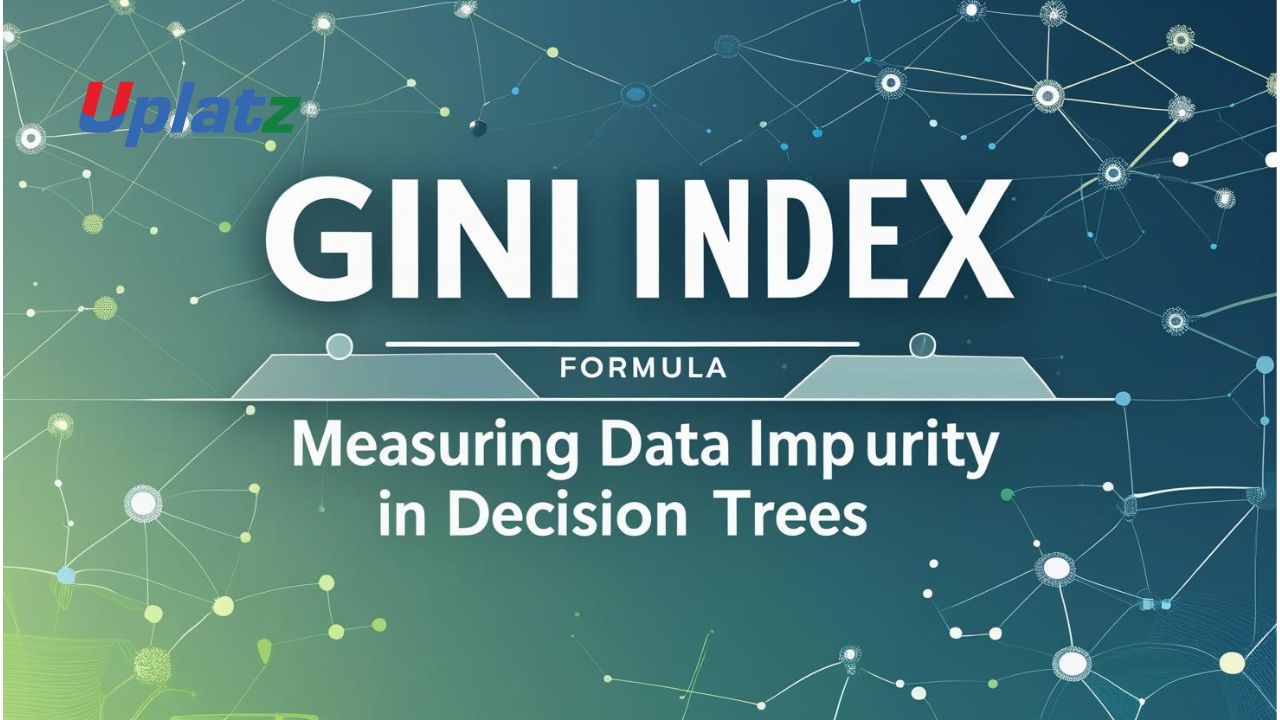 🔹 Short Description:
🔹 Short Description:
The Gini Index (or Gini Impurity) is a measure of how often a randomly chosen element would be incorrectly classified. It is used by decision tree algorithms like CART to determine the best feature to split the data.
🔹 Description (Plain Text):
The Gini Index is a key metric in classification tasks, especially in decision tree algorithms like CART (Classification and Regression Trees). It is used to evaluate the “impurity” or “purity” of a node by assessing how often a randomly chosen element from the dataset would be misclassified if it were randomly labeled according to the distribution of class labels in the node.
In other words, it tells you how mixed the classes are in a node. A lower Gini Index means purer nodes (i.e., most samples belong to a single class), while a higher Gini means more class mixing and greater uncertainty.
📐 Formula
For a given node ttt, the Gini Index is defined as:
Gini(t) = 1 − Σ (pᵢ)²
Where:
- pᵢ is the probability of class i in the node
- The summation runs over all possible classes
For a binary classification:
Gini(t) = 2 × p × (1 − p)
Where p is the probability of one of the classes
🧪 Example
Suppose a node contains 100 samples:
- 80 are Class A
- 20 are Class B
Then:
- p₁ = 0.8
- p₂ = 0.2
Gini(t) = 1 − (0.8² + 0.2²) = 1 − (0.64 + 0.04) = 1 − 0.68 = 0.32
This means there’s a 32% chance that a randomly selected sample from this node would be incorrectly labeled.
Now, if another node had 50 samples each of Class A and Class B:
- p₁ = p₂ = 0.5
Then:
Gini = 1 − (0.5² + 0.5²) = 1 − (0.25 + 0.25) = 0.5
This node is more impure than the previous one.
🧠 Why Gini Index Is Important
- Simple to compute: No logarithms required (unlike entropy)
- Efficient: Preferred in large datasets because of low computational cost
- Reliable: Produces similar decision trees to entropy-based splits
- Default impurity metric in CART algorithms
📊 Real-World Applications
- CART Decision Trees
Used to decide which feature to split on at each node. - Random Forests
Gini Index is averaged across multiple trees to identify feature importance. - Credit Scoring
Used to build tree-based models that determine creditworthiness. - Medical Diagnosis
Identifies the most informative patient characteristics to predict diseases. - Customer Churn Prediction
Helps segment customers into likely-to-leave vs. likely-to-stay groups. - Marketing Targeting
Identifies customer groups based on demographic or behavioral data.
⚖️ Gini vs. Entropy
| Aspect | Gini Index | Entropy |
| Interpretation | Probability of misclassification | Level of uncertainty or information |
| Formula | 1 − Σ(pᵢ²) | −Σ(pᵢ × log₂(pᵢ)) |
| Efficiency | Faster, no logarithms | Slower, includes log calculations |
| Preferred in | CART | ID3, C4.5 |
Both give similar results, but Gini is often the default due to speed.
⚠️ Limitations
- Does not account for class imbalance: Heavily skewed data can bias results
- Not ideal with many classes: Gini may favor attributes with more categories
- Local decision-making: Looks only at immediate split, not long-term tree accuracy
- Sensitivity to data noise: Mislabels or outliers can mislead splitting
Despite these, Gini Index remains widely used due to its simplicity and effectiveness in constructing efficient and interpretable classification models.
🧩 Summary
- Formula: Gini = 1 − Σ(pᵢ)²
- Purpose: Measures impurity to choose best splits
- Best For: Binary and multi-class classification using trees
- Key Insight: The closer Gini is to 0, the purer the node
Gini Index is a fast, reliable way to build accurate classification trees and plays a key role in many machine learning pipelines.
🔹 Meta Title:
Gini Index Formula – Measure Node Impurity in Decision Tree Models
🔹 Meta Description:
Explore the Gini Index formula used in CART decision trees to measure impurity. Learn how it evaluates feature splits and improves classification accuracy.
